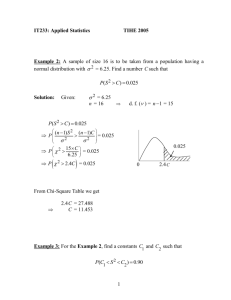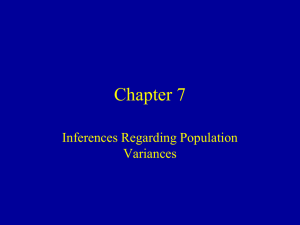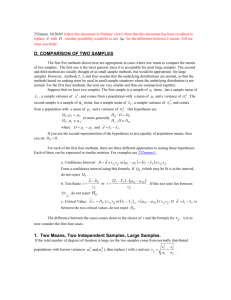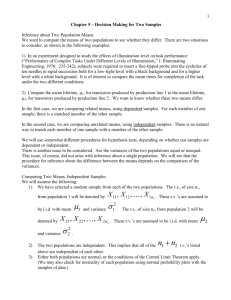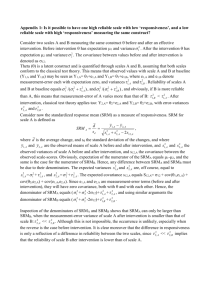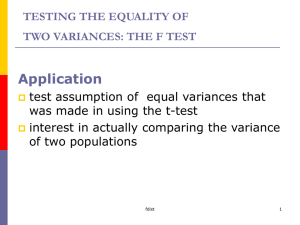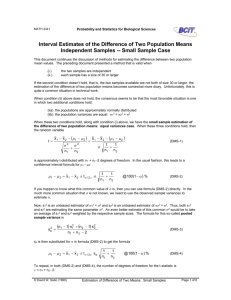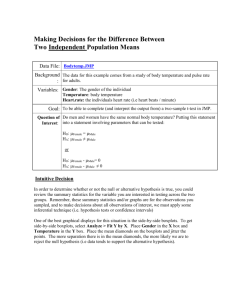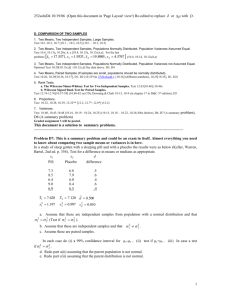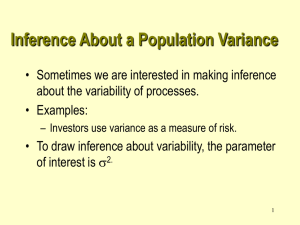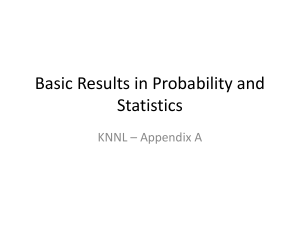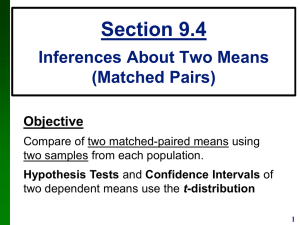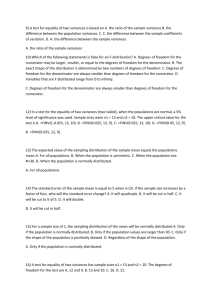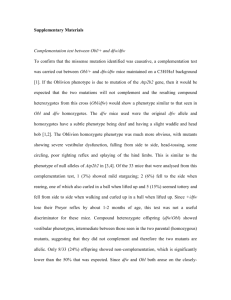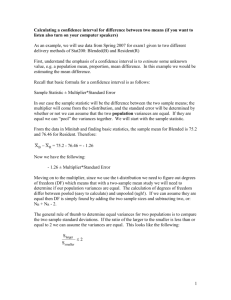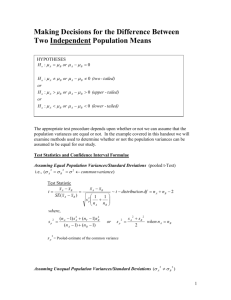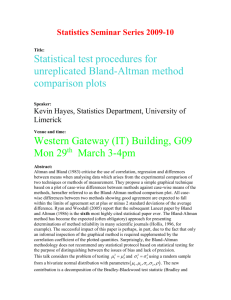Satterthwaite`s Approximation for Degrees of Freedom
advertisement
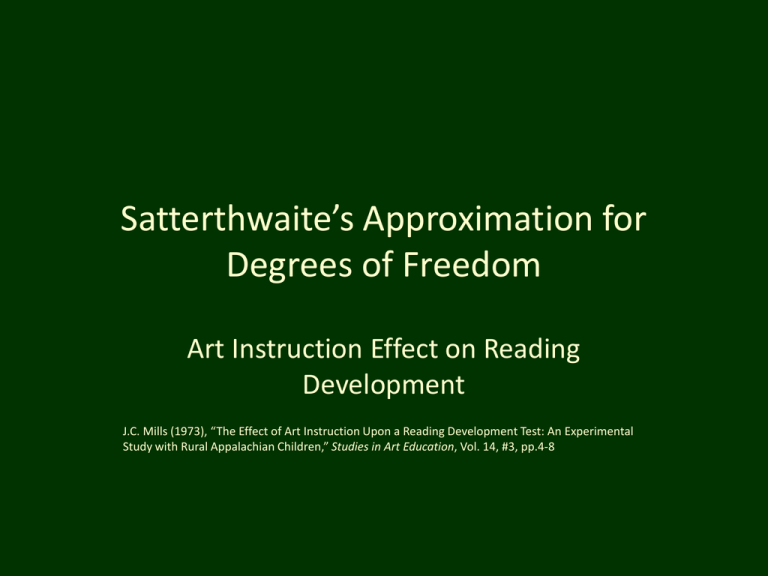
Satterthwaite’s Approximation for Degrees of Freedom Art Instruction Effect on Reading Development J.C. Mills (1973), “The Effect of Art Instruction Upon a Reading Development Test: An Experimental Study with Rural Appalachian Children,” Studies in Art Education, Vol. 14, #3, pp.4-8 Setting • Comparing Means from 2 Normal Distributions • Small Samples (Computer Packages Solve for any sizes) • Distributions have Possibly Different Variances N(50,100) N(60,225) 0 20 40 60 80 100 120 Y11 ,...,Y1n1 ~ N 1 , 12 ni Yi j 1 S 2 i ni Y 2 1 2 1 1 n 1 n2 i 1,2 2 p 2 ~ N 0,1 n1 n2 2 S p2 2 S p2 n1 n2 2 2 S n1 1S12 n2 1S 22 n1 n2 2 W n1 n2 2S p2 2 ~ n21 n2 2 Z W Y 1 Y 2 1 2 1 1 2 Z n1 n2 Y 1 Y 2 1 2 ~ t n1 n2 2 2 W Sp 1 2 1 S p n n dfW 2 2 1 Y 1 Y 2 1 2 P t / 2,n1 n2 2 t / 2,n1 n2 2 1 1 1 S p2 n n 1 2 Y1 Y2 ~ n2i 1 2 W dfW 12 22 2 2 ni 1Si2 ni 1 2 Y i ~ N i , n i 1 ij Y i j 1 Y21 ,...,Y2 n2 ~ N 2 , 22 Y ni Yij Y Z Case 1 – Variances are Equal Case 2 – Variances are Unequal - I Y11 ,...,Y1n1 ~ N 1 , 12 ni 1Si2 i2 Z Y 1 ~ Y21 ,...,Y2 n2 ~ N 2 , 22 12 22 Y1 Y2 ni 1S i2 ni 1Si2 2 i4 2 2 2 E ni 1, V 2ni 1 E Si i , V Si 2 2 ni 1 i i 2 ni 1 Y 2 1 2 ~ N 0,1 n1 n2 P roblem: ReplacingDenominator with est imatedvariances, consider: 2 1 2 2 S12 S 22 W * n1 n2 which is NOT a chi - square divided by its degrees of freedom. dfW * 12 22 n n 2 1 W W 2 Aside : W ~ 2 E W , V W 2 E 1, V S12 S 22 12 22 n n n n W* W* 1 2 2 1 E 12 E 1 V 2 df 2 2 2 2 2 W * dfW * 1 2 1 2 1 2 n 1 n2 n1 n2 n1 n2 1 2 14 1 2 24 2 2 2 n n 1 n n 1 2 2 1 1 * Case 2 – Variances are Unequal - II W* 1 V 2 2 2 df W * 1 2 n n 1 2 1 2 14 1 2 24 2 2 2 n1 n1 1 n2 n2 1 * 14 24 12 22 2 2 2 n1 n1 1 n2 n2 1 n1 n2 2 * 2 2 2 * 2 n 2 2 n 2 1 2 1 1 2 2 n1 1 n1 n2 n2 1 Replacing the unknown variances with their estimates: 2 S12 S 22 n1 n2 2 2 2 g MS i i ^ i 1 where: g 1 MS S 2 n 1 * i i i i i 2 2 n S 2 n 2 S 2 n 2 g MS i i i 1 1 2 2 i n1 1 n2 1 i 1 So, we have the approximate degrees of freedom if our denominator were the square root of the ratio of a chi-square to its degrees of freedom Example – Art Instruction Effect on Reading • Experiment to Determine Effect of Art Instruction on a Reading Development Test 52 Children Given Baseline Reading Test 26 Received Art Instruction (Trt), 26 Did not (Control) Y=Post-Test – Pre-Test Score Y T 7.77 ST2 70.49 nT 26 Y C 1.58 SC2 26.00 nC 26 H0 : 2 T 2 C H 0 : T C H A : 2 T 2 C H A : T C T .S . : Fobs ST2 2 2.71 RR : maxFobs ,1 Fobs F.025 , 25, 25 2.23 SC T .S . : tobs YT Y C ST2 SC2 nT nC 7.77 (1.58) 4.85 70.49 26.00 26 26 2 70.49 26 ^ 13.77 26 26 * 41.23 70.49 262 26.00 262 0.33 25 25 RR : tobs t.025 , 41.23 2.020

